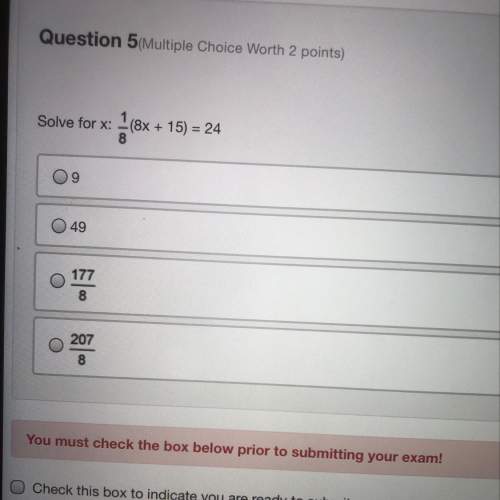
Mathematics, 15.07.2020 01:01, biaxialpower789
A quadrilateral has vertices A(4, 5), B(7, 7), C(6, 8), and D(4, 7). The image of the quadrilateral has vertices A"(–6, 0), B"(–9, –2), C"(–8, –3), and D"(–6, –2). Which transformations may have taken place? T(–2, 5) circle sign ry = x T(--2, 5) circle R0, 180degree ry=x circle T(-2,5) R0,180degree circleT(-2,5)

Answers: 1
Other questions on the subject: Mathematics

Mathematics, 21.06.2019 13:00, vlactawhalm29
Remmi wrote the equation of the line y=⅓(x+2) he solved for x and got x=3y-2 which of the following is an equivalent equation for x? a. x=y-11/3 b. x=y+7/3 c. x=3(y-⅔) d. x=3(y+⅔)
Answers: 1


Mathematics, 21.06.2019 19:00, datands
Acompany that manufactures and sells guitars made changes in their product range. from the start they had 20 models. then they reduced the number of models to 15. as a result, the company enjoyed a 10% increase in turnover. - how much did the stock level change? in (%)
Answers: 2
Do you know the correct answer?
A quadrilateral has vertices A(4, 5), B(7, 7), C(6, 8), and D(4, 7). The image of the quadrilateral...
Questions in other subjects:

Mathematics, 29.05.2021 08:00

History, 29.05.2021 08:00


Geography, 29.05.2021 08:00

Mathematics, 29.05.2021 08:00



Biology, 29.05.2021 08:00

English, 29.05.2021 08:00

Geography, 29.05.2021 08:00







